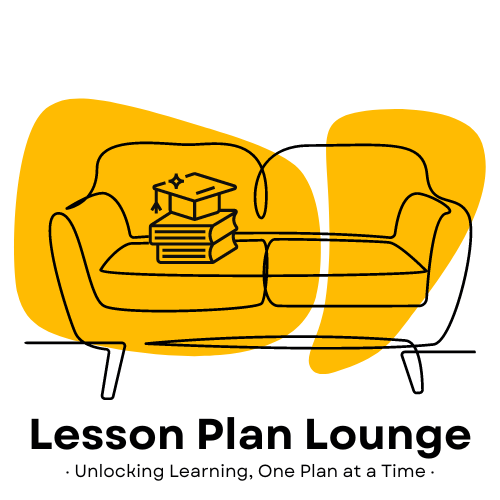
Shifting the Lens: From Behaviour to Needs and Strengths
Share
As teachers, we are often faced with challenging behaviours in the classroom. It can be frustrating and disruptive, pulling our focus from the lesson at hand. But what if we viewed these behaviours not as acts of defiance but as signals? What if, instead of simply managing the behaviour, we sought to understand the unmet need driving it, while also recognising the inherent strength behind the action? This dual perspective can be transformative, creating a more empowering and effective classroom environment.
This article will guide you through the process of looking beyond the behaviour to its root cause, reframing challenging traits as strengths and understanding the profound impact of early trauma on a student's ability to thrive.
Behaviour is a Symptom, Not the Problem
Every behaviour is a form of communication. Often, it's an indication that a fundamental need—for safety, connection or autonomy—is not being met. When a student's fundamental needs are unfulfilled, their brains are in a state of stress, which can manifest in ways often misconstrued as "bad behaviour."
Instead of a purely punitive approach, a needs-based approach seeks to understand the "why." However, a truly holistic view doesn't stop there; it also asks, "What is strong in this child?"
From Deficits to Strengths: Seeing the Whole Child
Focusing only on the challenges associated with trauma can unintentionally frame a student as a collection of problems to be solved. A strengths-based approach offers a more balanced and empowering perspective. It acknowledges that many challenging behaviours are the flip side of a strength developed for survival. By learning to see these strengths, we can help students channel them in positive and productive ways.
Consider these common reframes:
Hypervigilance à Keen Awareness: A child who is constantly scanning the room is highly perceptive. This skill can be channelled into classroom roles that require attention to detail or noticing the needs of others.
Controlling Behaviour à Leadership Potential: The need to control the environment often comes from a past where the child had no control. This demonstrates a drive and an ability to plan that, when nurtured, can become a powerful leadership quality.
Argumentative Nature à Strong Sense of Justice: A student who argues every point may have a highly developed sense of fairness. This passion can be guided into activities like debating, persuasive writing or leading class discussions on fairness and rules.
Constant Movement/Fidgeting à Kinaesthetic Learner: This student may simply need to move to learn and process information. This isn't a deficit; it's a learning style.
When we reframe our perspective, we shift the narrative from "what is wrong with this student?" to "what is strong in this student?"
The Traumatised Brain: A Different Blueprint
For some students, the roots of their struggles begin even before birth. Exposure to significant maternal stress or trauma in utero can fundamentally alter the developing fetal brain, creating a different neurological blueprint adapted for survival in a threatening world.
Key differences in brain structure and function can include:
- An overactive amygdala: The brain's "threat detector," leading to a persistent state of fight, flight or freeze.
- An underdeveloped prefrontal cortex: Affecting executive functions like impulse control and emotional regulation.
- Changes in the hippocampus: Impacting memory, learning and the ability to distinguish between past and present threats.
These neurological differences are adaptations, not choices. The behaviours we see are often survival responses, not wilful misconduct.
From Behaviour Management to Needs-Based Support: Practical Strategies
Shifting our practice involves combining the search for unmet needs with the recognition of student strengths.
1. Build a Foundation of Safety and Connection
- Predictable routines and structures: Create a sense of safety for all students.
- Create a calm and regulated classroom: Consider sensory needs and provide a calm-down corner.
- Prioritise relationships: Show genuine care and empathy. A strong teacher-student relationship is the most powerful tool for both healing and learning.
2. Become a "Behaviour and Strengths Detective"
- Observe and document: When a behaviour occurs, identify the antecedent and the need it might be communicating. At the same time, ask yourself: What strength might be underlying this action?
- Leverage interests and talents: Discover what the student is passionate about. A student who loves art but struggles with writing could storyboard their essay first. A student with a lot of physical energy could be the designated "materials manager."
- Collaborate and communicate: Talk to the student (when they are calm) and their parents or carers to gain a more complete picture of their needs and their strengths.
3. Teach, Don't Just Punish
- Explicitly teach social-emotional skills: Provide direct instruction in areas like emotional regulation and problem-solving.
- Provide choice and autonomy: Giving students a sense of control over their learning is empowering and leverages their leadership potential.
- Use restorative practices: Help students understand the impact of their actions and find ways to repair harm, appealing to their innate sense of justice.
By shifting our focus from simply managing behaviour to meeting needs and nurturing strengths, we create classrooms that are not only more effective learning environments but also places of healing, growth and empowerment for every student.
Sources
- Australian Institute of Family Studies. (n.d.). The neurobiological effects of childhood maltreatment.
- Child Mind Institute. (n.d.). How Trauma Affects Kids in School.
- Perry, B. D. (2006). The Neurosequential Model of Therapeutics: An evidence-based, developmentally sensitive approach to the treatment of traumatized children. In N. B. Webb (Ed.), Working with traumatized youth in child welfare.
- Substance Abuse and Mental Health Services Administration. (2014). SAMHSA’s Concept of Trauma and Guidance for a Trauma-Informed Approach.
- van der Kolk, B. A. (2014). The body keeps the score: Brain, mind and body in the healing of trauma.
